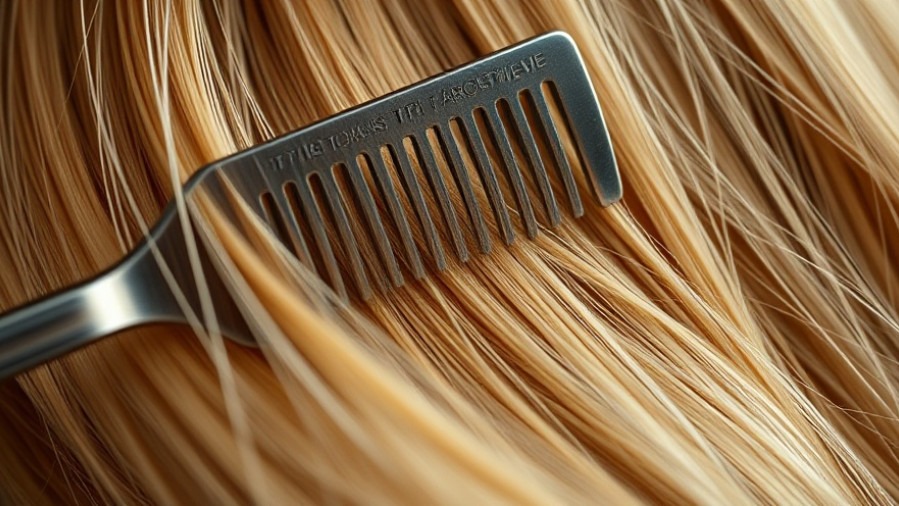
A New Era in Hair Restoration: The Promise of Stevia
In the quest for effective hair restoration solutions, new research suggests that a common sweetener, stevioside, derived from the Stevia plant, could enhance the effectiveness of milder treatments like minoxidil. A study conducted using mice models revealed that combining minoxidil with microneedles infused with stevioside resulted in significant hair regrowth in approximately 67.5% of treated areas. This finding is particularly exciting for those suffering from hair loss, a condition that affects up to 50% of adults at some point in their lives.
Unlocking Potency: A Closer Look at Minoxidil
Minoxidil is popularly known as the active ingredient in products like Rogaine, commonly used for battling hair loss. While effective, its limited water solubility and skin penetration capabilities often restrict its full potential. As noted by licensed dermatologists, these barriers have led many practitioners to combine minoxidil with microneedling—a technique designed to make it easier for the medication to penetrate the skin. The infused patch technology using stevioside represents a sophisticated evolution of this approach.
How Does Stevioside Work?
Stevioside acts as a natural absorption enhancer. Essentially, it helps to dissolve minoxidil more effectively, allowing more of the medication to penetrate deeply into hair follicles. Dermatologists like Dr. Gary Goldenberg emphasize that the enhanced absorption could lead to improved efficacy in treating hair loss conditions like androgenetic alopecia, where hair follicles shrink due to sensitivity to hormones like DHT (dihydrotestosterone).
What the Study Revealed
In this groundbreaking study published in Advanced Healthcare Materials, researchers tested the efficacy of a dissolvable microneedle patch that combines stevioside with minoxidil. The results within just over a month pointed towards promising hair regrowth where conventional treatments have often fallen short. Mice receiving this combination showed remarkable improvements in hair follicle activity, leading to new hair growth.
The Future of Hair Restoration
While the promising results in mice are a step forward, experts caution that comprehensive human trials are essential before we can conclude the effectiveness and safety of this treatment in people. The intersection of natural compounds and established medications may pave the way for developing safer and more effective hair loss therapies. As Lifeng Kang, a co-author of the study, cautions, human hair growth cycles differ significantly from those of mice, which makes it imperative to conduct further research.
Addressing Concerns and Expectations
What does this mean for consumers interested in using stevia-infused treatments? Dermatologists emphasize that self-medicating with DIY mixtures of stevia and minoxidil is ill-advised without the microneedling aspect. Such amalgamation could fail to yield the desired results without scientific backing. Dermatologist Ife J. Rodney states that safety must remain a priority, underscoring the necessity for controlled trials to assess possible side effects and overall efficacy.
Conclusion: A Potential Breakthrough for Many
The infusion of a common natural sweetener into existing medical treatments could revolutionize the hair loss industry. If further trials prove successful, incorporating stevioside might not only enhance hair regrowth but could also open paths toward more natural and efficient alternatives in a market saturated with options. For those struggling with hair loss, science appears to be moving in a promising direction—offering hope for a full and vibrant head of hair.
Join the discussion! Stay informed about the latest health and wellness trends. Share this article with anyone looking for effective solutions to hair loss!
 Add Row
Add Row  Add Element
Add Element 



Write A Comment